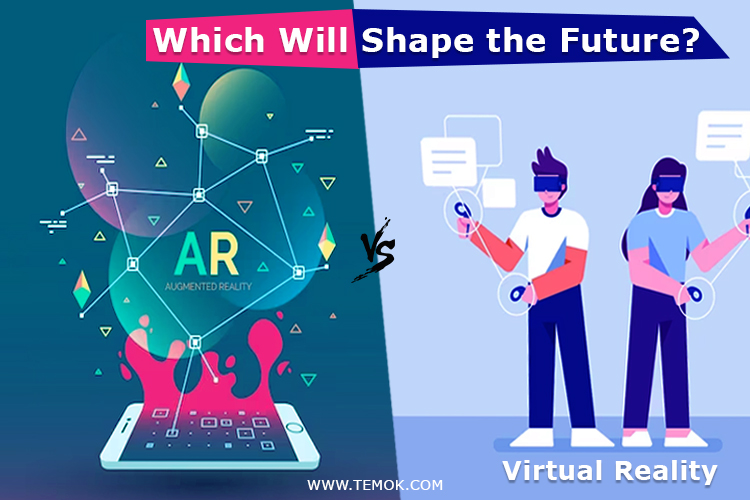Augmented Reality (AR) and Virtual Reality (VR) are two rapidly evolving technologies that have the potential to shape the future in various industries. While both offer immersive experiences, they differ in their approach and applications. We will explore the characteristics of AR and VR and discuss their potential impact on the future.
Virtual Reality is a technology that creates a simulated environment, completely separate from the real world. By wearing a VR headset, users are transported to a computer-generated virtual world where they can interact with objects and experience a sense of presence. VR is already making significant strides in the gaming, entertainment, and training industries. It allows for realistic simulations and immersive experiences that can be highly engaging and effective for training, education, and entertainment purposes.
On the other hand, Augmented Reality overlays digital information onto the real world, enhancing the user’s perception of their environment. AR technology is commonly experienced through smartphones, tablets, or smart glasses, enabling users to see virtual objects or information superimposed on their real-world surroundings. AR has gained popularity with applications like Pokémon Go, where virtual creatures are placed in real-world locations. It has also found applications in areas such as retail, healthcare, and architecture, providing users with additional information and enhancing their interaction with the physical world.
When considering the future impact of AR and VR, it is important to examine their respective strengths and limitations. VR offers a fully immersive experience, enabling users to escape reality and explore new virtual worlds. This technology has tremendous potential in gaming, virtual tourism, and simulations for training purposes. As VR headsets become more accessible and technology improves, it is likely to become a more integral part of our daily lives, revolutionizing entertainment, communication, and even remote work.
On the other hand, AR has the advantage of blending the virtual and real world, offering a more seamless integration of digital information into our physical environment. With the increasing power and portability of mobile devices, AR has become more accessible to the masses. It has the potential to revolutionize industries such as retail, where customers can try on virtual clothes or visualize furniture in their homes before making a purchase. In the healthcare field, AR can assist surgeons with real-time information and guidance during complex procedures. AR’s ability to enhance productivity, improve safety, and provide real-time information makes it a promising technology for various industries.
While both AR and VR have their unique strengths, it is challenging to predict which technology will have a more significant impact on the future. The adoption and success of each technology depend on several factors, including cost, accessibility, ease of use, content availability, and technological advancements. Both AR and VR are rapidly evolving fields, and it is possible that they will converge in the future, giving rise to a Mixed Reality (MR) experience that combines the best elements of both technologies.
In conclusion, both Augmented Reality and Virtual Reality have the potential to shape the future across various industries. VR provides immersive, simulated experiences, while AR enhances the real world with virtual overlays. The future impact of these technologies will be influenced by technological advancements, content development, and user adoption. Ultimately, the true potential of AR and VR lies in their ability to transform the way we interact with the digital and physical worlds, offering new possibilities for entertainment, education, communication, and productivity.


